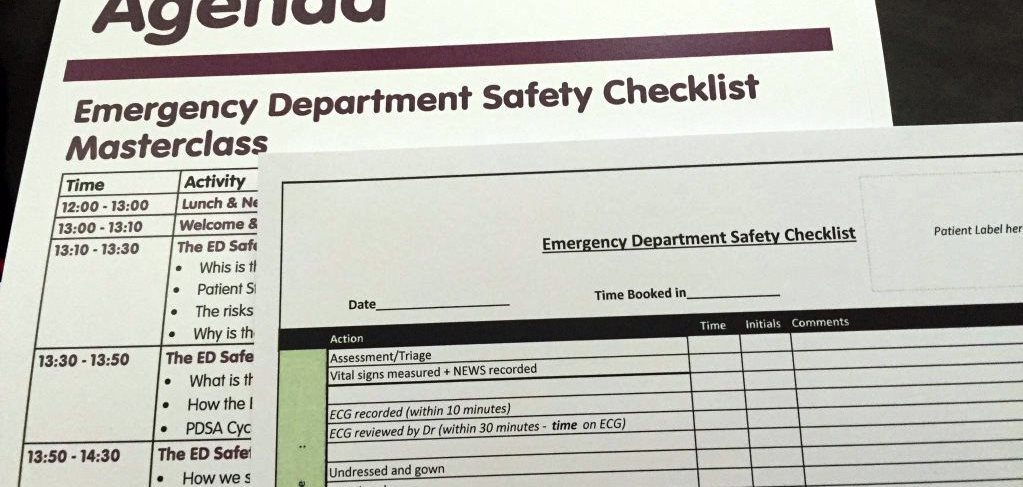
“Checklists are like toothbrushes; everyone wants one, but they don’t want to use anyone else’s!”
On Monday 25 April 2016, the West of England Academic Health Science Network (AHSN) hosted a free masterclass on the Emergency Department (ED) Safety Checklist, piloted at University Hospitals Bristol NHS Foundation Trust (UHB). Delegates were invited from EDs and AHSNs around the country that had expressed an interest in the project.
The masterclass was attended by 22 delegates from 12 different organisations.
Dr Emma Redfern, ED Consultant from UHB, explained why they had developed the ED Safety Checklist: to respond to the challenges of crowding in ED; to be able to quickly assess the sickest patients (by using the National Early Warning Score (NEWS) as an indicator); and to be able to triage according to patient’s needs.
Alex Hastie and Caroline Clark, ED Nurses from UHB, explained how the ED Safety Checklist had been developed. They described the quality improvement methods and the plan-do-study-act (PDSA) cycles employed to test the checklist, and described the benefits they had realised ‘on the shop-floor’:
- an aide memoire for basic clinical care,
- NEWScores used to differentiate the sickest patients,
- a tool for measuring performance in real time
- a tool to support staff when they are at full capacity
- a tool to resource plan during periods of crowing
- a ‘how to’ guide for bank and agency staff unfamiliar with the setting
- a reduction in free-text writing in notes which has consequently improved patient contact time.
The West of England AHSN presented the implementation toolkit developed to assist adopting Trusts with how they might introduce the principle of the ED Safety Checklist. We also explored the principle of measurement to prove an intervention has an impact, key performance indicators and the ‘Life’ web-based platform to support quality improvement projects.
Dr Phil Cowburn, Acute Care Medical Director at South Western Ambulance Service NHS Foundation Trust (SWASFT) and Consultant in Emergency Medicine at UHB described the challenges of interfacing the ED Safety Checklist with the ambulance trust, particularly where the responsibility of risk sits for patients waiting to off load into ED in the queue.
Feedback from delegates on the day was very positive and the masterclass was well received. Funding, staff capacity and general ‘intervention fatigue’ were seen as challenges. However, the benefits of the ED Safety Checklist, the improvements to patient safety, improved patient triage, improved patient flow through ED, and improved staff resourcing and management were recognised and agreed across the board.
The slide show from the ED Safety Checklist masterclass can be downloaded here.
A full event write up on the ED Safety Checklist masterclass can be found here.
The ED Safety Checklist Toolkit can be downloaded here.
If you’d like any further information on this programme, please contact ellie.wetz@weahsn.net.
Posted on May 5, 2016


